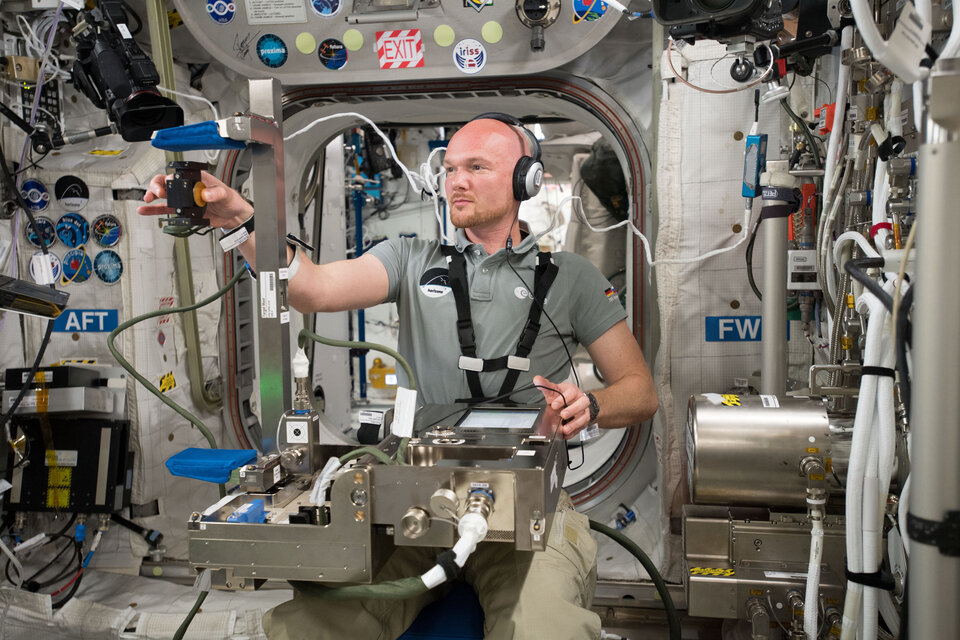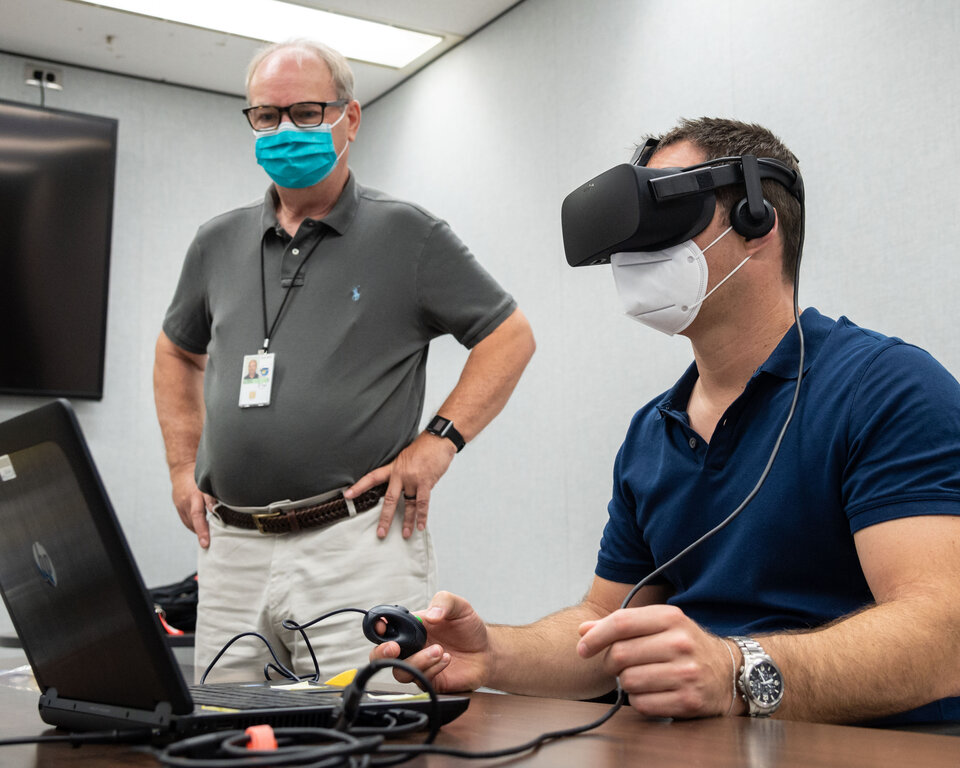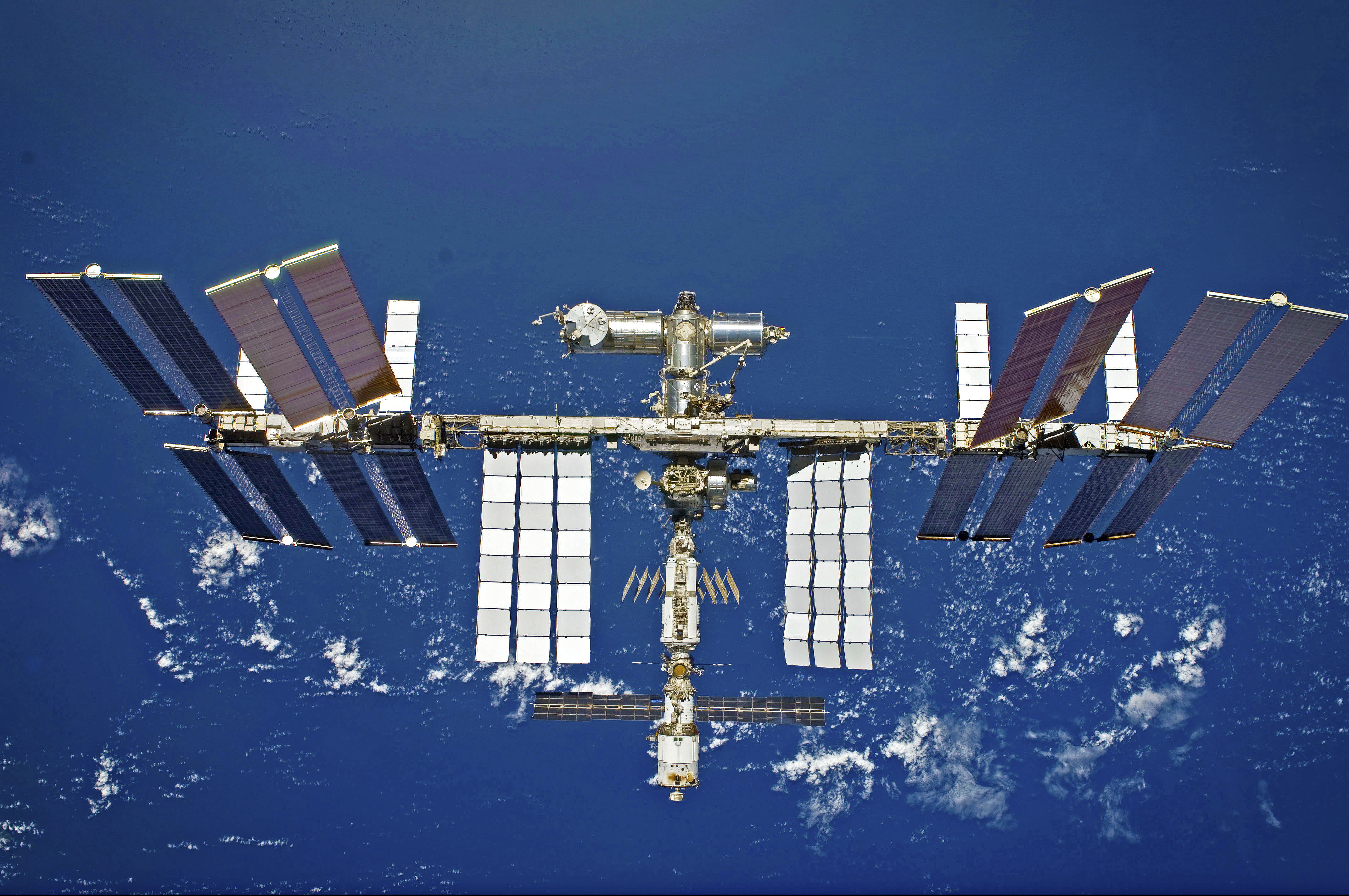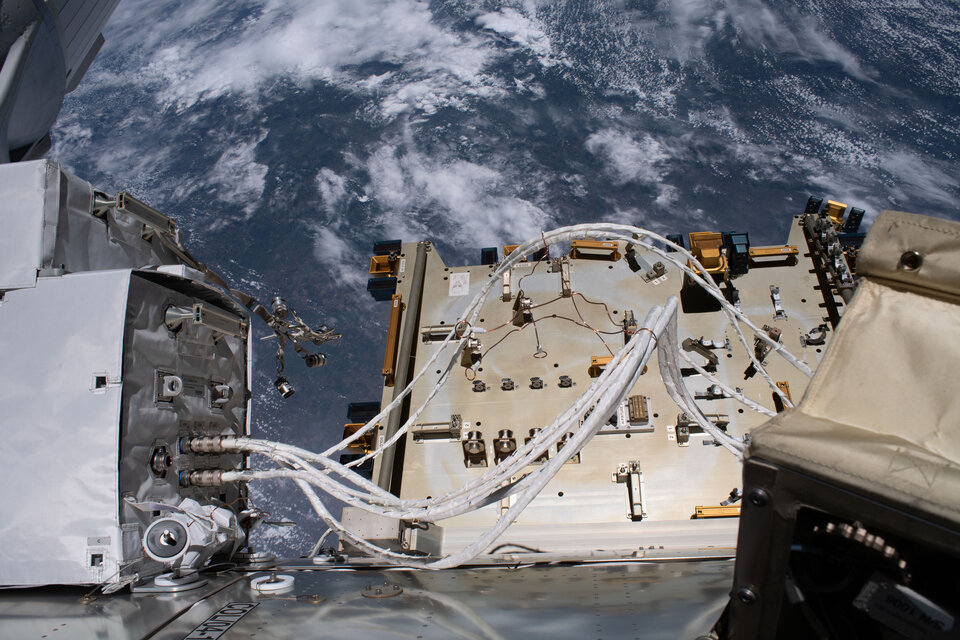The month of February saw astronauts and ground control work on maintaining and checking new hardware installed inside and out Europe’s Columbus laboratory. With a spacewalk in January to install the external commercial facility Bartolomeo and ColKa antenna, astronauts, and mission control set up the systems and troubleshoot – alongside all the regular European science.
The Electromagnetic Levitator finished a batch of scientific runs investigating metal alloys as they solidify while suspended in argon gas. The miniature furnace allows researchers to observe the patterns and crystals that form in a metallic matrix. This data will deepen our understanding of metallurgy and improve the industrial process of creating metal alloys on Earth.
The Soft Matter Dynamics Compacted Granulars experiment ran in February allowing researchers to get a peek at how granular materials behave when they cool down in a gravity-less environment, where sedimentation is restrained. On Earth, sedimentation – the effect of gravity pulling particles down in a suspension – constrains valuable observations sought by this fundamental physics experiment.

On 1 February, NASA astronaut Shannon Walker took some pictures around the European Physiology Module to plan for the installation of a new Payload Data Router. This technology demonstrator for the International Space Station stores and transmits analogue data in digital form with very high fidelity, similar to that employed in aircraft during test flights. Mission designers are interested in its use for future space missions.
The European Physiology Module supported one new Grip session featuring NASA astronauts Mike Hopkins and Victor Glover. With two sessions complete, only one more session is needed to get a full understanding of how the astronauts’ perception of mass and movement changes in space, and how their body and mind adapts to accommodate in weightlessness.
The European Physiology Module was upgraded on 26 February with JAXA astronaut Soichi Noguchi replacing an old ‘Science Module Support Computer’. Meanwhile ESA’s next generation Life Support Rack continues to be tweaked and tested with a software upgrade and fine-tuning. The life-support system is a technology demonstrator for closed air reutilisation, capturing carbon dioxide from the cabin air and recovering up to 50% of the oxygen, allowing more autonomous utilisation of human-inhabited facilities.
Time again

On 19 February Victor and Soichi completed their fourth session of Time, an experiment that investigates an observed phenomenon of time subjectively speeding up in microgravity. They each estimated how long a visual target appeared on a laptop screen and their reaction times were recorded. This record will chart any changes during their six-month mission.
On 12 February astronauts took close-up pictures of the Bartolomeo power connector caps. During the installation spacewalk in January, only two of the four power connectors could be securely connected. Victor and Mike returned for a follow-up spacewalk in March.




